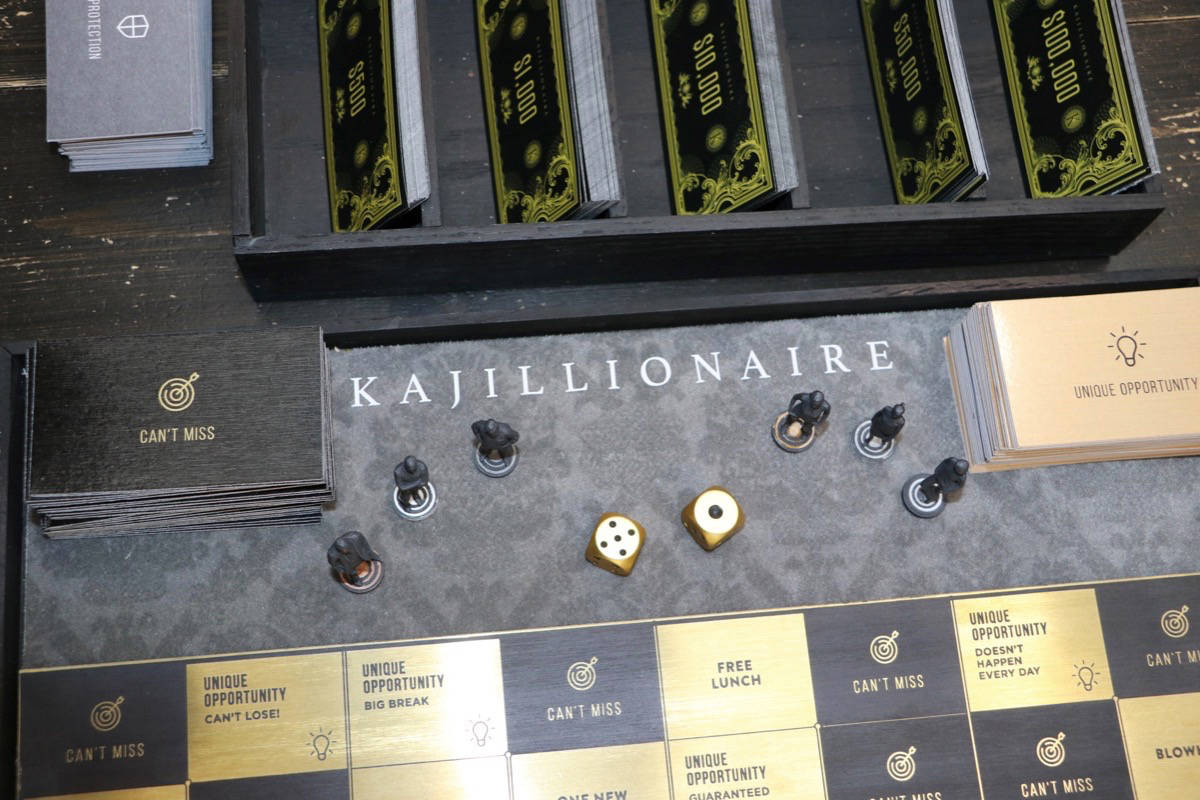There is now a fun and engaging way to learn about how to protect yourself from investment fraud.
With March being Fraud Prevention Month, the Alberta Securities Commission (ASC) has launched a board game called Kajillionaire that takes players into the world of investment fraud.
“We are using the resurgent interest in board games which are popping up everywhere to help start a conversation on how investor education can really help to protect Albertans against investment fraud,” said Alison Trollope, director of communications and investor education with the ASC.
“Each player starts the game with $184,000 in life savings. That’s the amount the average Canadian has saved for retirement,” she added. “So you are basically ‘risking’ your life savings.
“Then, players start rolling the dice and as they go through the board they are presented with scenarios, and each scenario sounds like it’s a ‘can’t miss’ very lucrative opportunity that will make you wildly rich! That’s why we came up with the name Kajillionaire.”
Players experience potential scams such as affinity fraud, Ponzi schemes, pump-and-dump scams, fake celebrity endorsement scams and more, learning to recognize the characteristics of fraud.
Whoever finishes the game with the most money technically wins, but no one really wins in the world of fraud because, in the end, a significant amount of each players’ life savings will be lost, said Trollope.
“Just like fraud, sometimes you might think, ‘Oh, this is going well. And you might even put more money into it as the game goes on.”
Kajillionaire will be available to play locally at Bower Ponds Board Game Café.
The game is also being promoted on the ASC’s investor education web site CheckFirst.ca where folks can also find a list of game locations, too.
Trollope said work on the game started last December and officials also tapped a University of Calgary psychology professor to infuse the game with elements of human decision-making that might lead people to make bad decisions.
“There’s an element of the game where you might keep putting money in because you think you might have just lost a little, so you can perhaps recoup your money.” This is something people tend to do, she said.
“We do see that born out with victims of investment fraud that we deal with here. We see consistent examples of people who may have lost a little and then they want to make up for their losses. Or the scam artist is promising that if they give over a little bit more money, they will end up getting back all their money and more.”
As mentioned, the ASC consulted with Professor of Psychology Dr. Derek Chapman, whose research explores decision-making processes such as persuasion, personality and attitude formation.
“The psychological factors that play a role in fraud are very similar, impacting an individual’s decision-making process and playing a large role in whether or not they fall for a scam,” he said. “Recognizing that fraud continues to be an issue in our province, I was eager to have the opportunity to use my research to help protect Albertans.”
According to the 2018 Alberta Investors Study conducted by the ASC, only one in three of Albertans who suspected fraud reported it to authorities.
Of those Albertans who think they may have fallen for fraud, one in four report losing between $5,000 and $25,000.
“A lot of time, scam artists will play on people’s emotions,” said Trollope. “They promise high rates of return with little or no risk; they promise that if you get in now via this ‘hot tip’ you’ll get wealthy which could mean you may have a more comfortable retirement, or be able to leave something for the kids.
“The scammer will play on those human emotions in order to get you to hand over your money,” she said, adding that seniors are often a target because some have amassed significant sums of retirement money. “Scam artists go where the money is. And it’s not only seniors – also, people who are leading up to retirement.”
People are encouraged to visit CheckFirst.ca to explore resources to help bolster their financial literacy and make wise investment decisions.



